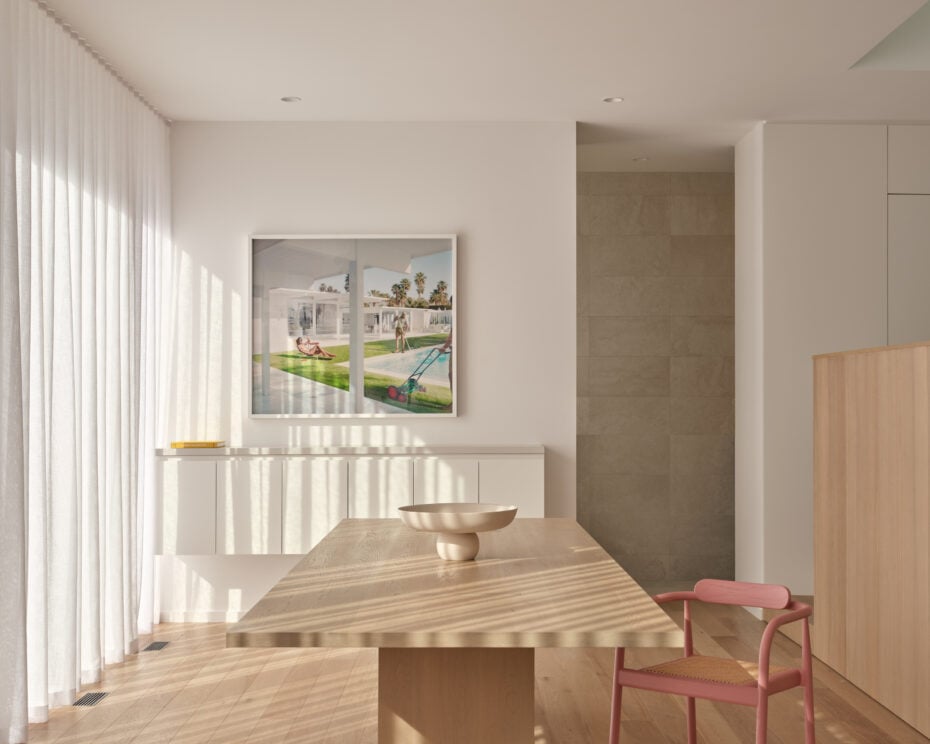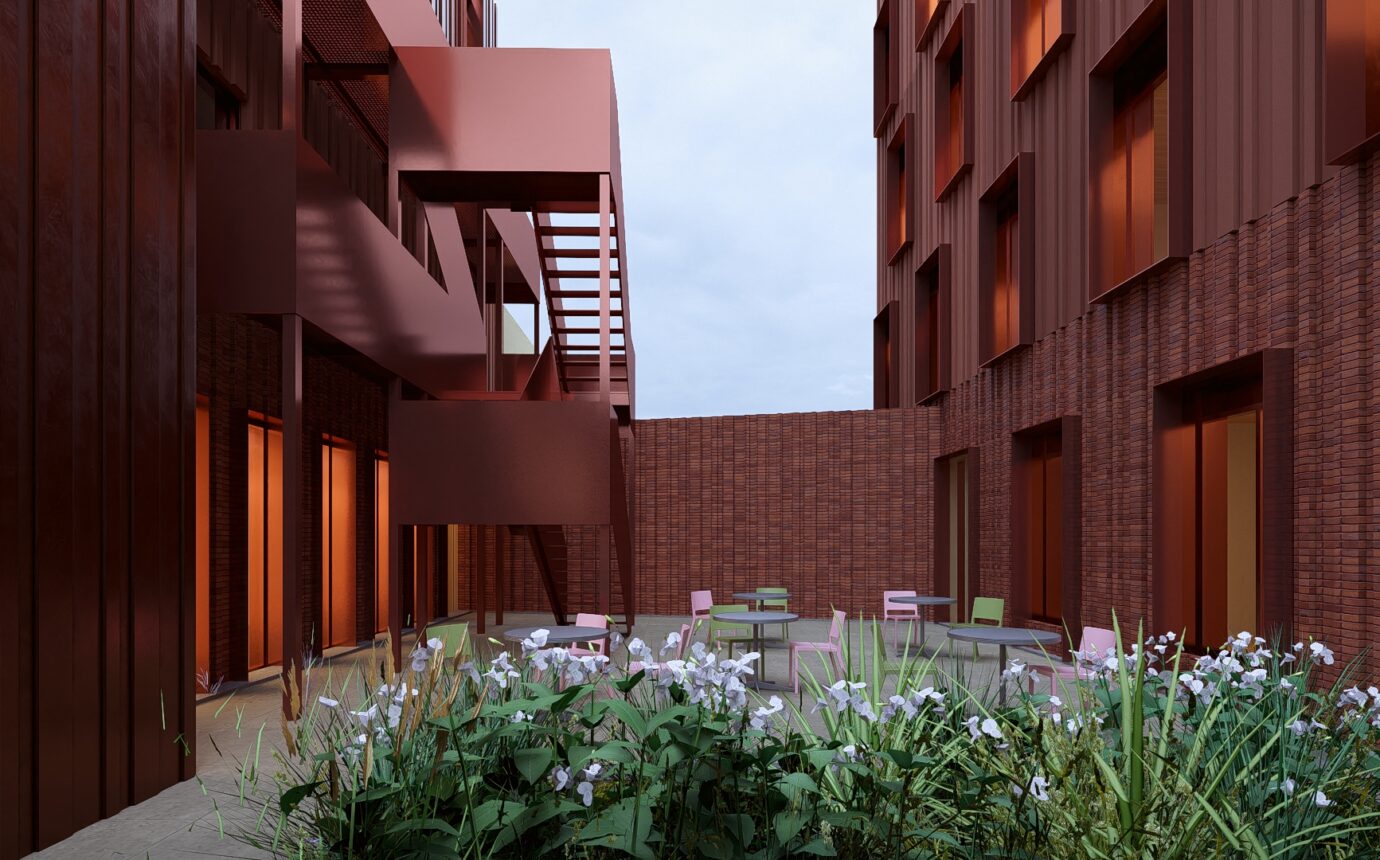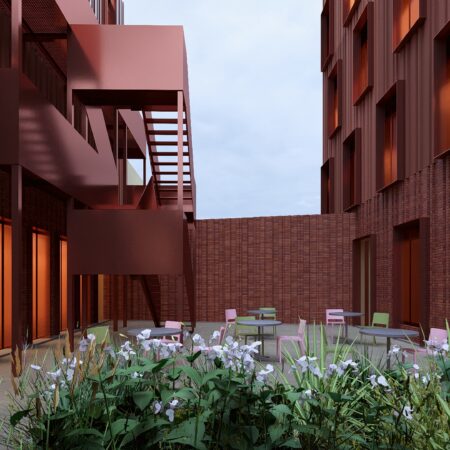A Cedarvale Home That Bends Toward the Light

Guided by the presence of a mature willow tree, this home by StudioAC defies suburban conventions to create a serene, light-filled retreat
Before any plans were drawn, StudioAC knew one thing: the willow tree would stay.
Located on a corner lot in Toronto’s Cedarvale neighbourhood, this sculptural family home was always going to be a departure from the norm. The existing tree, large and long-rooted, wasn’t just a picturesque element of the backyard—it dictated the very shape of the home. “We wanted it to be somewhat omnipresent,” says architect Andrew Hill, co-founder of StudioAC. With time, the tree became less of an obstacle and more of an anchor.
The clients had lived on the lot before and were intimately familiar with its quirks. Their former home had been modified over time, its layout twisted by efforts to avoid the tree’s footprint. “It was quirky in an almost endearing way,” says architect and project lead Yu Chu Su, “but the experience of the existing house didn’t acknowledge the tree at all.” Despite its prominent location, the home had large, opaque walls facing the willow—cutting it out of daily life.
That misalignment between landscape and layout shaped the brief for the new home, which the clients wanted to feel grounded and clean. “Because of their experience living with these angles,” says Su, “they were determined to get rid of them. They said, ‘No weird-shaped rooms.’” It was a challenge the studio took seriously—especially given that the tree’s sprawling root system made rigid planning difficult.
The solution was to rotate the house. Instead of aligning the three-volume structure with the city’s grid, StudioAC shifted it to suit the site. Each bar was treated as a discrete element, rotated just enough to preserve the roots and sidestep zoning restrictions. “By making the entire site on an angle, it allowed us to make none of the rooms within those volumes on an angle,” says co-founder Jennifer Kudlats. “It was like a big shift that let the interior be completely rational.”
That clarity was hard-won. “We went through a lot of schemes on this project,” recalls Hill. “Many of the earlier versions produced oblique and obtuse angles. We definitely had to step back at a certain moment and try to come up with something more rational that would suit the constraints.”
The final scheme creates more than just functional rooms—it orchestrates an experience. The west volume contains the dining and living spaces on the ground floor, with the primary bedroom above, all facing the backyard and the willow. The east volume includes the family den and children’s bedrooms, capturing morning light. At the centre of the Cedarvale home, a sculptural stair connects both sides, flanked by the kitchen and bathed in light from a large skylight above. “We talk about the house in three volumes,” says Kudlats, “but on the interior, they’re very interconnected. The ground floor is all very open concept.”
This orientation wasn’t just about the tree—it was about sun. “We talk about this project having a kind of solar choreography,” says Su. “By turning the house, we were able to face it toward true west and true east, not just the street. That’s not something you usually get on a Toronto lot.” The result is a home that responds to the passage of time—shifting in mood and brightness throughout the day.
StudioAC describes their work not as minimalist, but as singular. “We talk less about minimalism, but we talk a lot about singularity,” says Kudlats. “Sometimes it’s material singularity, sometimes it’s formal. But it’s always about creating a strong framework that can support the layering of life.”
That framework is especially clear in the home’s material palette. Pale grey stucco clads the exterior—“a kind of massing model built at scale,” as Hill puts it—while warm wood-framed windows offer a softer, more tactile contrast. The windows act as a literal and figurative threshold between inside and out, subtly aligning with the natural textures of the home’s interior finishes.
“There’s probably five materials in the whole house that align interior and exterior,” Kudlats says. “And that’s intentional. We want to create a canvas—something that’s resolved, but that leaves space for the family to layer their own colours and rhythms.”
Nowhere is that more evident than in the backyard, where a thin aluminum canopy extends from the home to form a covered pergola. The gesture feels seamless, folding the outdoor space into the architectural language of the house. “Shadow is another material we like to play with,” says Hill. “The canopy protects from solar heat gain and weather, but it also casts this subtle rhythm across the facade. It’s functional, but also about softness.”
Su adds that the pergola and deck were part of a long-standing wish from the clients. “They love their backyard and spend a lot of time back there,” he says. “So designing a space that offered shelter but didn’t dominate the house was key.”
The emphasis on restraint and clarity extended beyond the architecture. StudioAC worked closely with the homeowners to ensure the interiors felt just as intentional—warm, expressive, and cohesive with the home’s architectural language. That included curating an art collection that would live comfortably within the pared-back palette and shifting natural light.
Art consultant Laura Mann helped shape that process, sourcing new works that responded to the architecture’s tone and daylighting conditions. “She looked at the quality of light, the wall space, and the materials, and helped the clients select pieces that really complemented the architecture,” says Kudlats.
The clients moved in last fall, and while they’ve yet to experience the home through a full summer, early signs suggest it performs exactly as imagined. “Not too long after moving in, they had a dinner with 70 people,” says Kudlats. “Some in the backyard, some in the kitchen, some in the living space–that sort of exterior fluidity was just a teaser for what’s to come.”
The project was dubbed Willow House—for obvious reasons–but the name belies the architectural precision at work. In this Cedarvale home, nature isn’t simply preserved; it’s elevated. A towering tree becomes the centrepiece of daily life.



























































